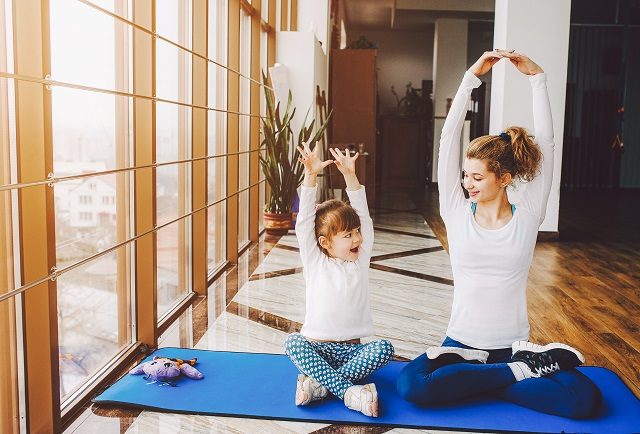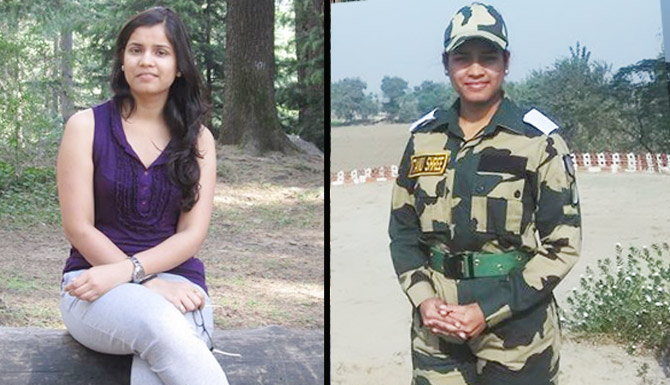When we say the word ‘Yoga’, an image of someone doing the tree pose or the dog pose comes to mind. But yoga is much more than that.
According to Bhagvad Gita, Yoga is classified into 4 types, namely Gyan, Dhyan, Ashtanga and Bhakti, of which, Ashtanga yoga, is most popular all over. However, ashtanga yoga is not just about asanas.

According to the eight-fold sutras compiled by Patanjali, ashtanga yoga (which means to link to the supreme) comprises of-
- Yama- Do’s and Don’ts related to moral conduct (truthfulness, non violence, non stealing etc)
- Niyama- Do’s and Don’ts related to personal care (hygiene, austerity, study of scriptures etc)
- Asana- The most popular kind, with postures and poses that would put an octopus to shame
- Pranayama- Breath control, breathing exercises (which Baba Ramdev has revived, thankfully)
- Pratyahara- Control of senses (like tongue, mind, belly and genitals)
- Dharna- Concentration
- Dhyana- Meditation
- Samadhi- Complete God consciousness
All over the world, in schools, colleges, housing societies, clubs there are two sutras that are followed with a lot of enthusiasm; Asana and Pranayama. And regular practice of these two has invited testimonials right from the common man to celebrities raving about its health benefits.
With growing evidence of its beneficial effects, it is about time, yoga should be inculcated from a young age, yet we find very few schools and colleges offering yoga as a compulsory form of exercise.
The youth today, is more enamoured by the 22 inch biceps and 8 packs. Gyms have sprung up more than yoga clubs. They are more worried about BMI (Body mass index) than BPI (brain performance index).
Gen Y, as we call them, are becoming a witness to a world which has growing problems such as; violence, stress, suicide, corruption, ADHD, job scarcity, substance abuse and honestly I could go on. In order for them to emerge resilient from circumstances that will someday put them in a spot, yoga is the answer, and not just the asana and pranayama but the rest as well. Concentrating on just the two aspects and neglecting the rest is like when a doctor prescribes a medication along with do’s and don’ts and you pick and chose whatever you feel like. Obviously the medicine will not work to its full potential.
Hence, it is imperative and about time, we realize the importance of applying all 8 sutras to experience yoga at its optimum level of benefits. And this is how if emphasized from a young age, children and youth can benefit from it.
Yama – In order to fight corruption and violence the practice of yama is very important. Today’s generation should be encouraged to speak up. Parents should realize that it is the youth of today that will change the corruption dynamics of our society. And rather than demoralizing them with statements such as “tum kya ukhad logey” they should be motivated to stand up against any wrong doings in society. This is yoga in action indeed!
Niyama – Both Yama and Niyama principles are the backbone of the other 6 sutras. Hence it’s imperative that they are followed to the T. Niyama mainly constitutes of hygiene, austerity, study of scriptures and being content. Out of these hygiene is practiced universally; however the others receive a setback. We are averse to the idea of practicing austerities like fasting, living simply, not accumulating too much and the study of scriptures is considered regressive. When in fact, by practicing austerity, we are actually developing disciple and self control which are needed to succeed in any vocation that we chose in life and by studying scriptures we are gaining spiritual knowledge which is the source of ultimate bliss.
Asana and Pranayama – The benefits of practicing these are widely known so much so that it is no longer only a woman’s form of practice. Even stalwarts such as Robert Downey Jr, Ricky Martin, Russell Brand and our very own Prime Minister Shri Narendra Modi endorse it. Statistics has shown an alarming increase in ADHD and cases of depression. Pranayama, which is essentially breathing exercises helps control our nervous system and thus helps with the above issues. So in order to help alleviate stress, the youth of today must not just concentrate on asanas but also pranayam.
Pratyahara– In the last few years, India too has become a consumerist society. This has led to greed for everything. We see it, we want it! We are not content with what we have and always want more. A tendency to over accumulate stems and that leads to frustration when our desires are not fulfilled. The youth today needs self restraint more than ever, especially with advent of social media and a tendency to have it all we are running far from the principle of ‘simple living high thinking’. By practicing the principle of pratyahara, we allow our mind to move from the object of senses to more inner fulfilment through the next 3 sutras. The youth today can get whatever they want at their fingertips, which leads to unrealistic expectations from life. By practicing pratyahara, they can be content in whatever situation they are placed and experience the futility of falling prey to their senses. This will enable them to focus on higher goals in life and ignite their creative potential to the fullest.
Dharna, Dhyana and Samadhi – These sutras invite the mind to focus on the supreme. This requires a lot of practice and its benefits are solely dependent on the above 5 sutras. Regular practice of meditation quietens the mind to focus on important aspects of life and its purpose. The practice of meditation and concentration must be encouraged, especially in our grossly distracted lives, where we are programmed to check our phone every minute, multi task for lack of time and constantly bombarded with a zillion choices. Children often claim they are bored because their senses are constantly used to some or the other form of engagement. And similar is the case with our youth. If we are not focussed then how can we achieving anything concrete in life?
This eightfold path of Ashtanga Yoga equips our mind, body and soul with the necessary tools to face challenges and build our core foundation on which the future is dependant and it is about time we encourage its practice within our families and society at large.
It is said, “one generation plants the trees so that the next can enjoy its shade.” Let us instill the seeds of yoga today so that our children and youth can benefit for generations to come.


























